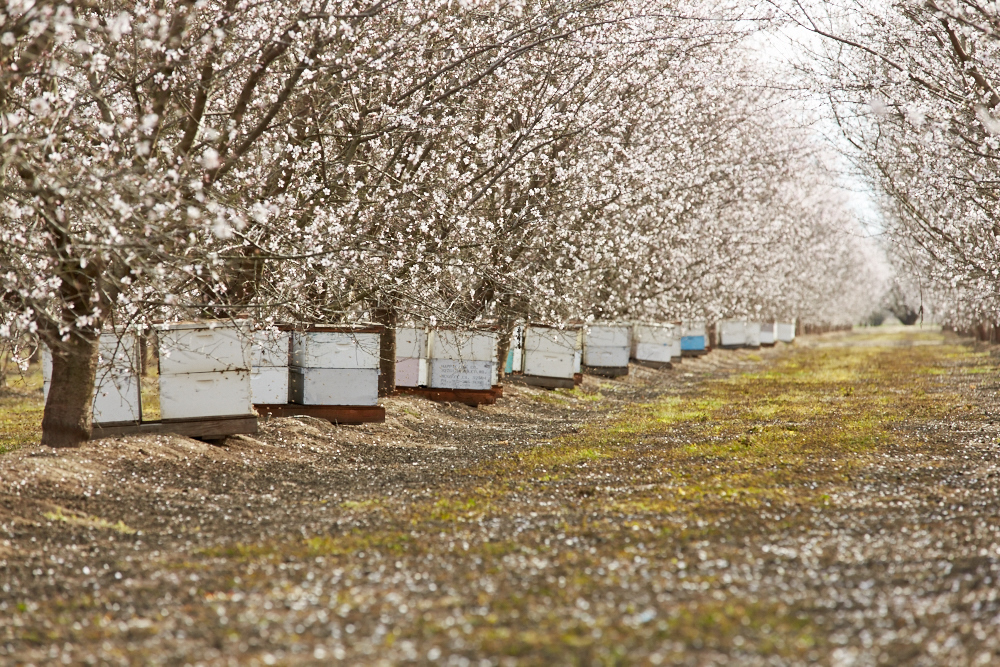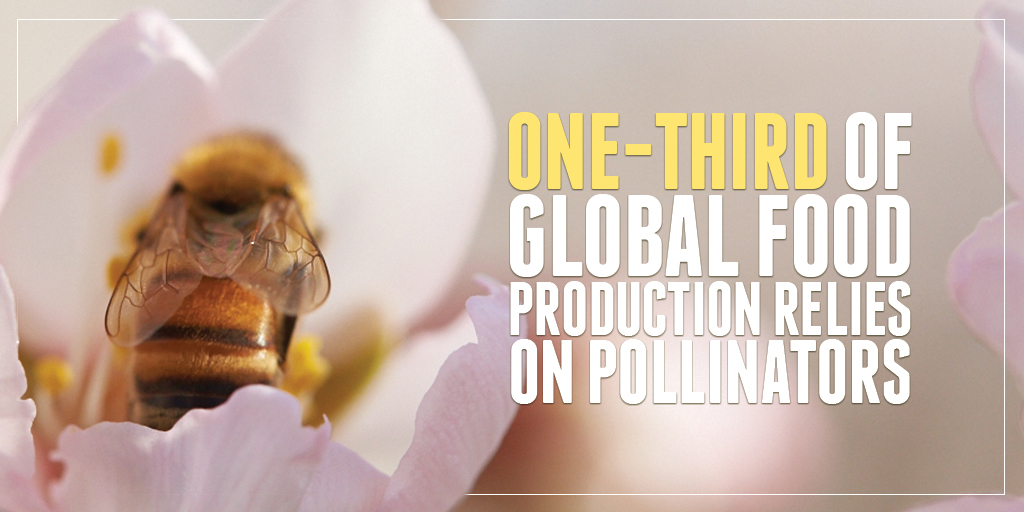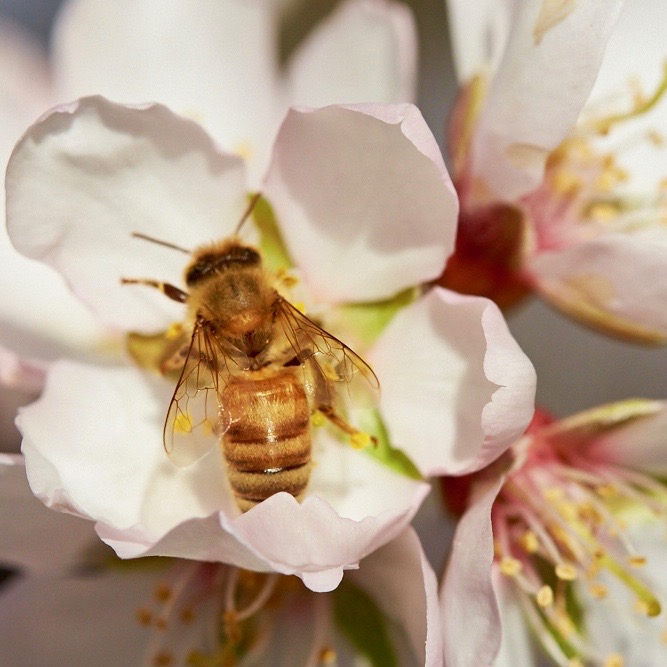It’s that time of year again! Between February and March, almond tree buds burst into beautiful blooms, and honey bees come to California Almond orchards.
Every almond you eat exists because a honey bee pollinated an almond blossom. Almond trees are not self-pollinating, so they need some extra help to pollinate flowers and start the process of growing nuts. Honey bees provide that essential link. During bloom season, honey bees move from tree to tree foraging for pollen and nectar, and pollinating almond blossoms along the way. Each pollinated flower will grow into an almond.
And, just like almonds are a nutritious snack for us, almond pollen is very nutritious for honey bees! It provides all 10 of the essential amino acids their diets require, and is their first natural food source of the year, supporting a healthy start to their pollination season.1 In fact, bee hives routinely leave stronger after visiting during almond bloom,2 and after their time in almond orchards, beekeepers can often split strong hives to grow their apiaries.3

Honey bee health is a matter that is close to our hearts here at Almond Board of California (ABC). In fact, since 1995, the California Almond community has committed $2.6 million through 113 research projects, more than any other crop group4. Using insights taken from this research, and in partnership with universities, government agencies, nonprofits and others, ABC established Honey Bee Best Management Practices (BMPs) for California Almonds. The Bee BMPs provide key recommendations to everyone involved in the pollination process to make the orchard a safe and welcoming place for honey bees, while balancing the need to protect the developing crop.

Honey bees are essential for the global food supply, with 35 percent of the world’s food crops relying on pollinators to some degree. After time in almond orchards, beekeepers take their honey bees to different locations across the United States, pollinating over 90 other crops, including apples, cherries, melons, blueberries, pumpkins, avocados, squash, and more. Come summer, the honey bees visit alfalfa, sunflowers, and clover, where they generate much of their honey. With this extensive pollination schedule, it’s clear why it is so important to adopt practices that promote healthy environments for honey bees, and to protect bees in the orchard and beyond.
Want to learn more about the mutually beneficial relationship between honey bees and almonds, and the ways ABC works to protect the sweet honey bee? Visit Almonds.com/Bees.
1USDA-ERS. Land Use, Land Cover and Pollinator Health: A Review and Trend Analysis. July 2017.
2Ramesh Sagili. Department of Horticulture, Oregon State University.
3Jabr, Ferris. The Mind-Boggling Math of Migratory Beekeeping. Scientific American. Aug. 2013.
4Gene Brandi. Vice President, American Beekeeping Federation.


